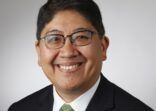“Investors should make sure they understand this is not an equity but a diversification fund,” Graham told FSA, explaining the risks of the firm’s emerging market mixed-asset income strategy that was launched in April last year.
Investors might wonder why emerging markets mixed-asset funds would have lower returns when compared to the performance of equities. For example, year-to-date, the MSCI Emerging Markets Index is up 25.5%, while the firm’s Parvest Multi-Asset Income Emerging Classic strategy is up 13.67%, according to FE data.
However, having a diversified fund protects investors from the downside. “There have been times when investors entered into emerging markets at the wrong time, and that has scared a lot of them,” Graham said.
“We’re just saying don’t rush into equities, and if you’re taking a diversified multi-asset approach, then you could at least sleep well at night.”
Wrong forecasts
Graham also said that sometimes portfolio managers and analysts could get things wrong. One example that he gave was when President Donald Trump was elected as the US President.
“We got the Trump rally wrong. Going into Trump, every single sell-side broker also said Trump is bad for equities, and within a week they all turned around and said Trump is great for equities.”
Since Graham’s team was too cautious about the outcome of the US elections, it did not add exposure into equities across the firm’s multi-asset strategies.
“We should have done that with hindsight,” he said.
Currently the firm’s multi-asset strategies have more equities than fixed income, especially since the political risks in Europe have started to ease. The firm also expects a “calm outlook” from central banks around the world.
The firm’s multi-asset emerging market fund has around 50% of its assets in equities as of the end of June, according to its fund factsheet. Around two-thirds of the portfolio’s assets are in emerging Asia equities.
“We think that growth in Asia is good,” Graham said, adding that he is positive on technology stocks as he expects more growth from these companies.
Fixed income accounts for 42% of the portfolio. “We have a preference for Latin America and Eastern European government bonds because yields are higher and there is more potential for more rate cuts especially in some of those countries where inflation has come down,” he said.
EM sentiment
Earlier this year, Christian Bucaro, the firm’s Singapore-based head of private wealth distribution for Asia-Pacific, told FSA that emerging market multi-asset funds were a hard sell to private banks in 2016.
Graham said that investors have started to change their mind. “The wealth manager community has become more positive,” Graham said.
He added that he is seeing strong inflows in emerging market ETFs this year after outflows in previous years.
“But there is a long way to go to get it back to the level of exposure that investors had four to five years ago in emerging markets, so we still consider people to be underinvested in emerging markets,” he said.
Performance of the Parvest Multi-Asset Income Emerging Classic Fund versus the MSCI Emerging Markets Index and the fund’s sector

















